One of the ways in which you can use InstantData is to recover an entire system to a new virtual machine. Follow the instructions below based on your environment.
Note:
- To recover an entire system, you need to have a Full System Backup (FSB) of that data. Full System Recovery (FSR) can only be performed from a backup date on which an FSB completed. To enable FSB, switch on the radio button in your ESE Agent. The button will turn green.
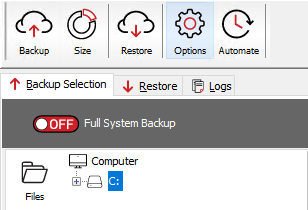
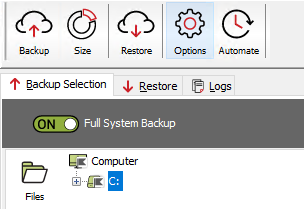
- Full System Recovery (FSR) does have certain limitations that need to be taken into account.
- To recover to a VMware virtual machine instead, see Article 1282.
How to recover to a Hyper-V virtual machine using InstantData
Watch our video or follow the steps below.
1. Access InstantData in one of the following ways:
From the ESE agent on the machine you want to recover
Click on the InstantData button at the top of the interface.

From the RedApp
Locate the machine you want to recover. Expand its menu on the right, and click Recover using InstantData.
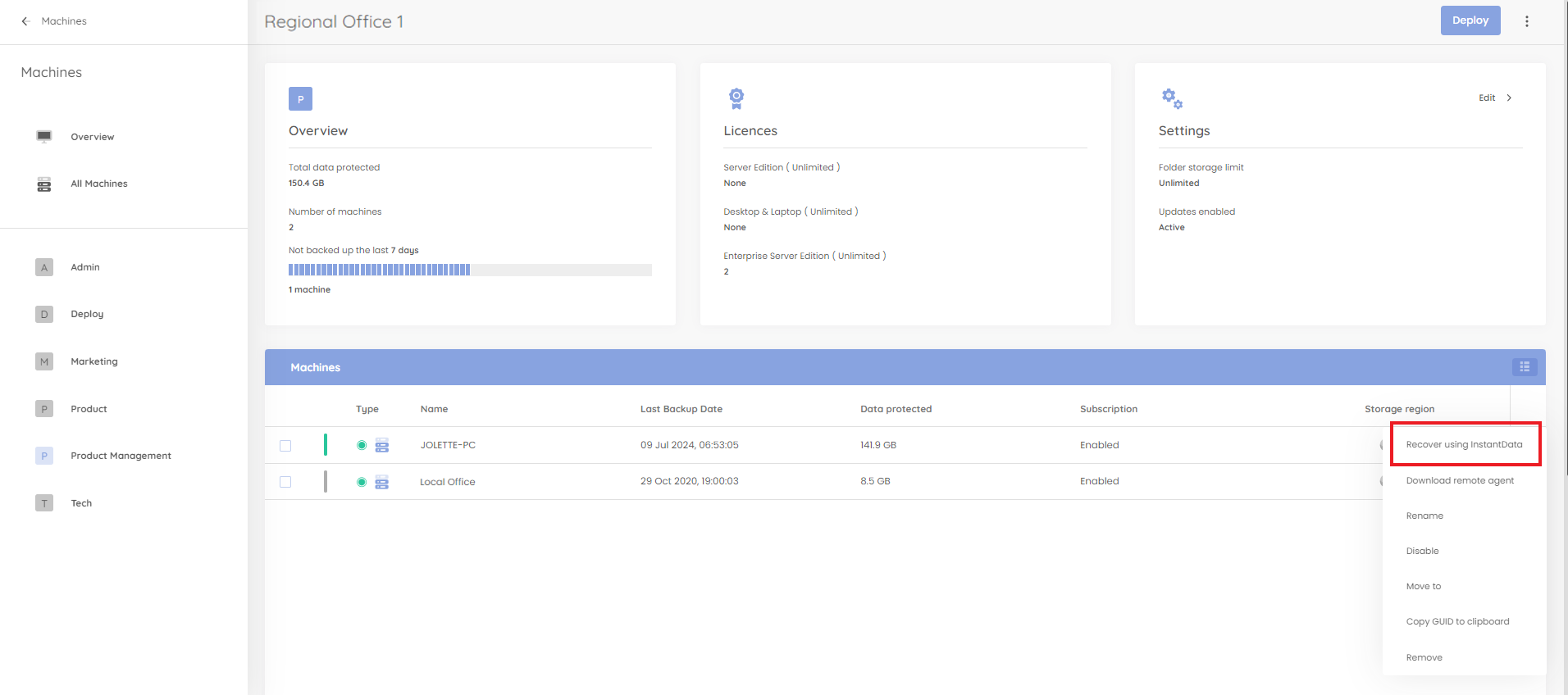
From the Storage Platform Console
Right-click the name of the account that your want to recover and click InstantData > Open.
2. Select Full System Recovery and click Next.
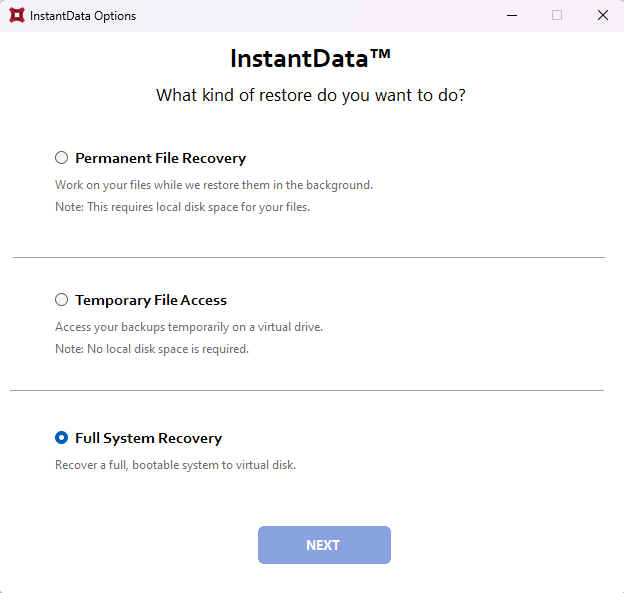
3. Enter your encryption key and click Next.
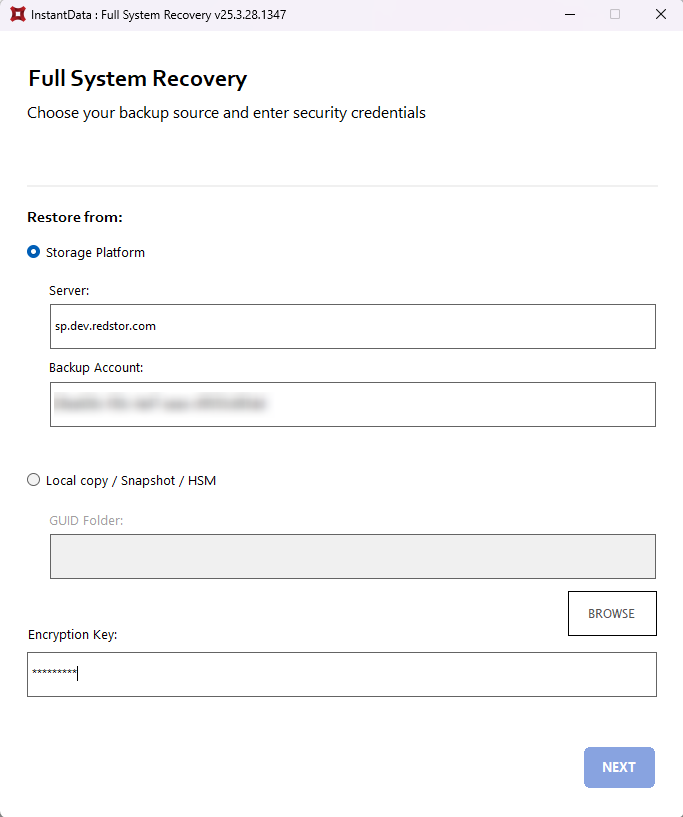
Note: The default behaviour is to restore the data from the Storage Platform. An alternative option is to restore the data from a local data source, e.g. local copy, snapshot or HSM. This is useful if the amount of data to be transferred is too large to transfer over the Internet within a limited time frame, or if no data connection is available, e.g. in a disaster recovery scenario. To do this, select the Local copy / Snapshot / HSM option and specify the path to the local data source.
4. Select the backup you want to recover. Under Target, select Local Virtual Disk Files. Under Disk Type, select the relevant VHDX option. Under Target Folder, specify a location where the new virtual disk should reside.
In the case of a test recovery, it is best practice to tick Disable backup service, as this prevents having two machines (original and recovered) connected to the same backup account.
If you need to increase or decrease your volumes (e.g. because deduplication is enabled and more space is needed), tick Configure volume settings. Then click Next.
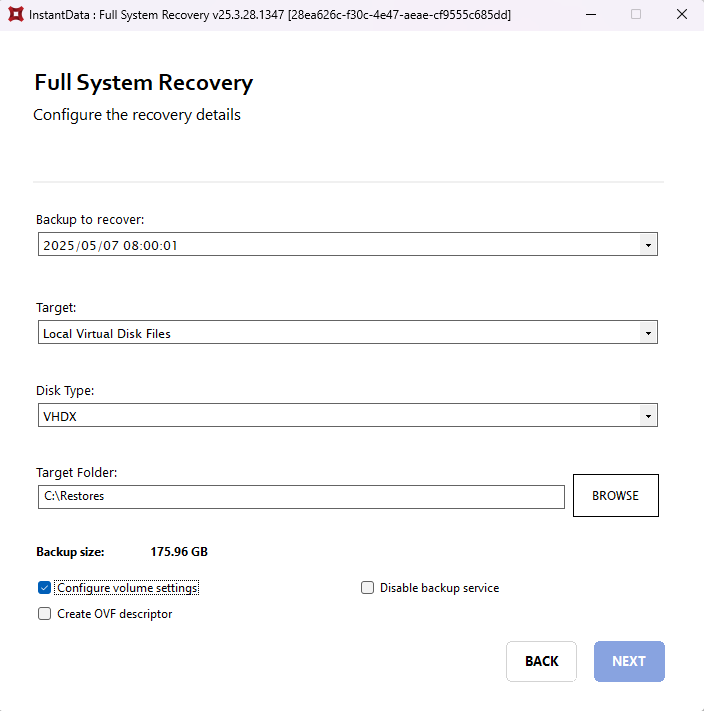
5. Adjust the volume sizes as needed and click Next. This will start the recovery process.
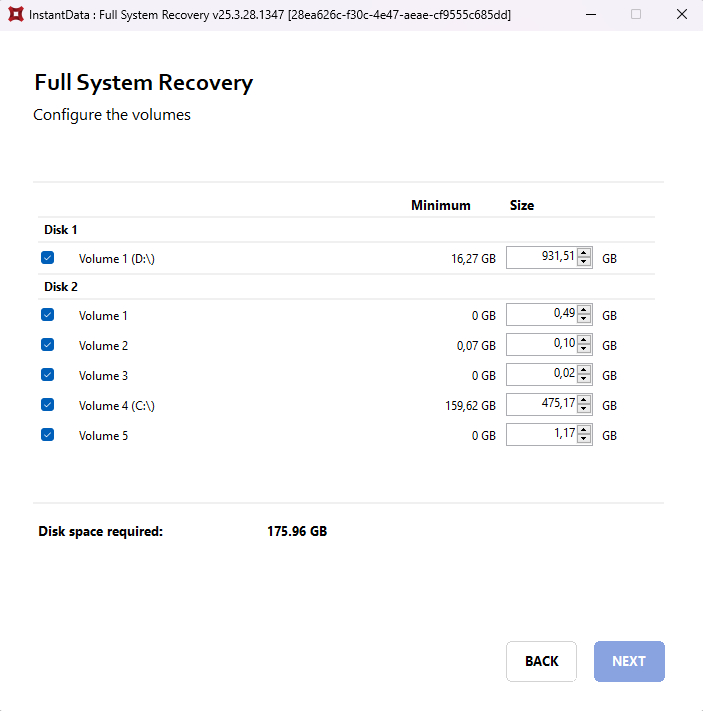
Note: When the recovery completes, note down the boot firmware type specified in the log message, since this will determine the generation of the new virtual machine to be created in Step 8 below (BIOS indicates Generation 1, UEFI indicates Generation 2).
5. Copy the generated VHDX file to a location that is accessible from the machine that will host the new virtual machine to which you will recover the data.
6. On the host machine, open Hyper-V Manager. In the Actions workspace on the right, click New > Virtual Machine.
7. In the dialog box that pops up, under Specify Name and Location, create a name for your new virtual machine.
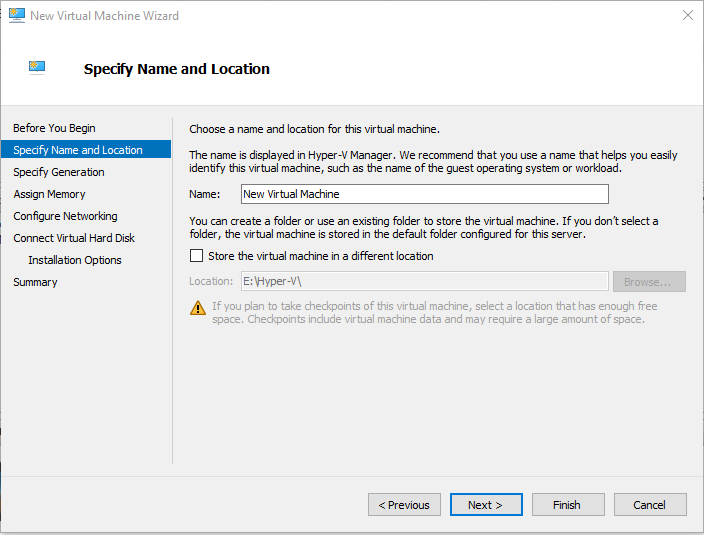
8. Specify the generation of your virtual machine.
Note: When restoring from a virtual machine to a virtual machine, specify the same generation as the original virtual machine.
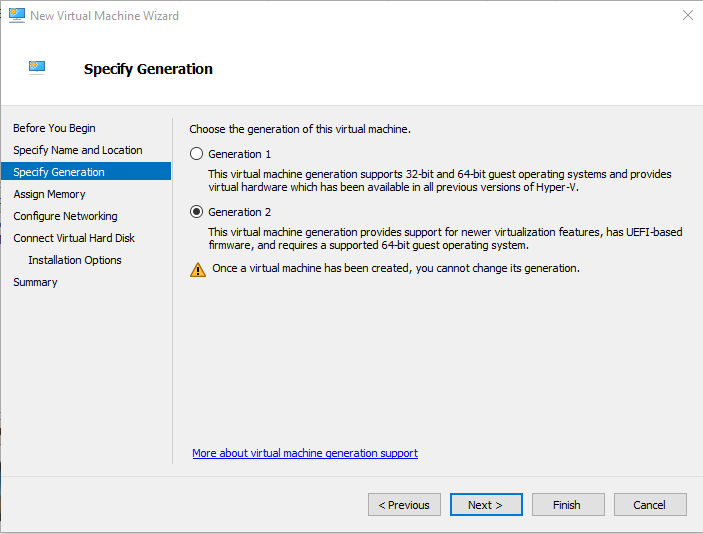
9. Under Assign Memory, set an appropriate amount of memory, e.g. 2048MB. Enable or disable Dynamic Memory according to your virtual machine creation policy.
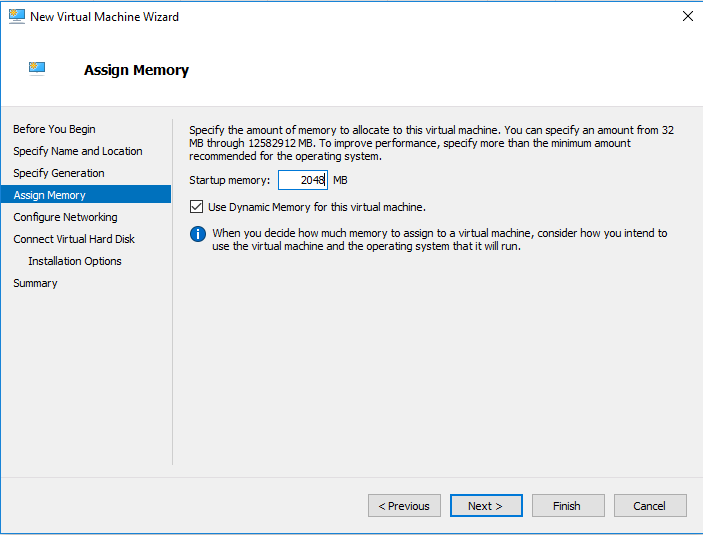
10. Under Configure Networking, select the appropriate connection from the drop-down menu.
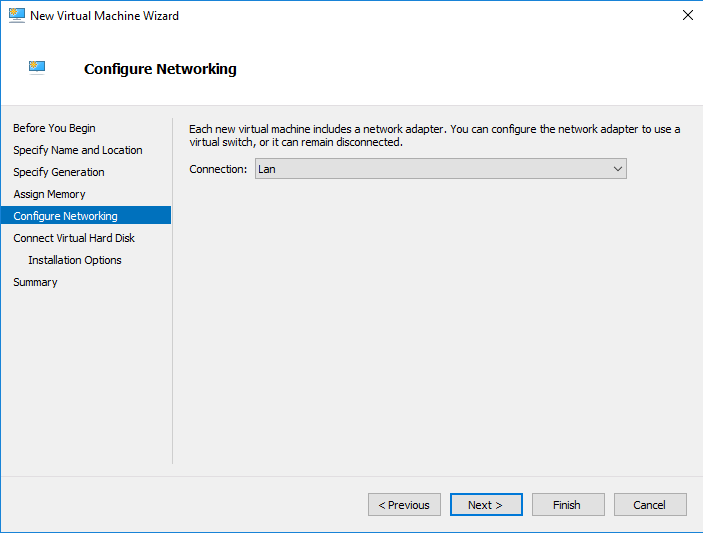
11. Under Connect Virtual Hard Disk, select the second option (Use an existing virtual hard disk) and enter the location to which you copied your VHDX file in Step 5. If there are multiple VHDX files, choose the file name containing the character "0". Then click Finish.
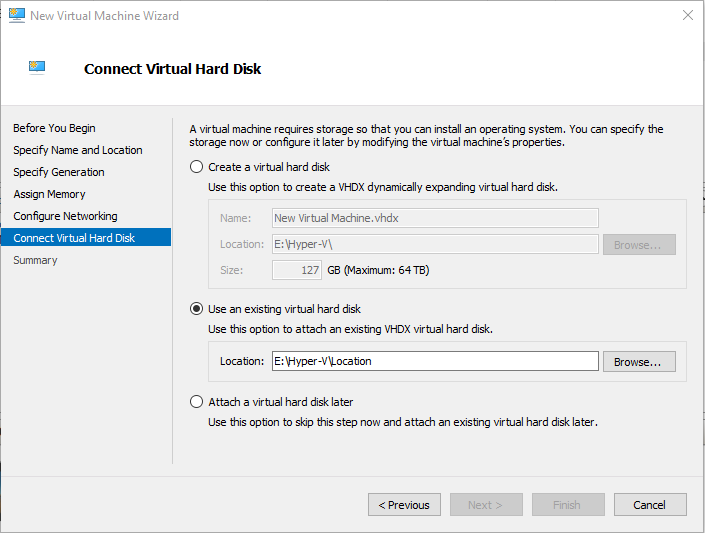
12. Once the recovery process is complete, double-click the name of your new virtual machine to start it.
Was this article helpful?
That’s Great!
Thank you for your feedback
Sorry! We couldn't be helpful
Thank you for your feedback
Feedback sent
We appreciate your effort and will try to fix the article
